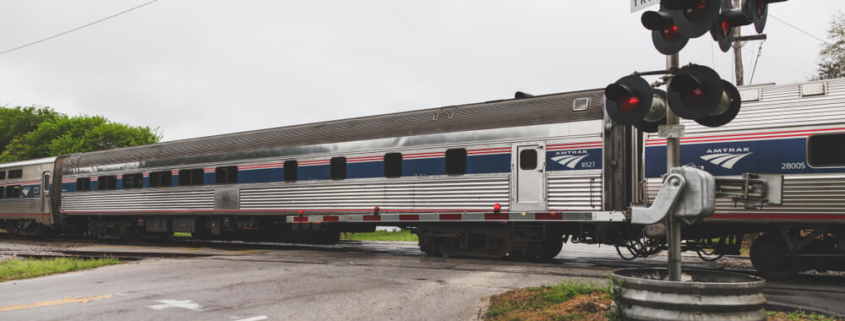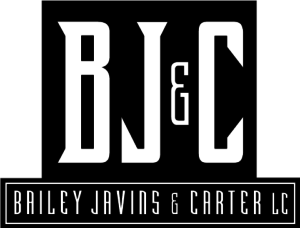Hazards Drivers Face at Georgia Railroad Crossings
Railroad crossings are points at which train tracks intersect a roadway. Among several types of railroad-highway grade crossings, some may not contain standard warning devices or proper signage. While unmarked railroad crossings are hazardous for any driver, these are especially dangerous for commercial trucks and big tractor-trailers, as these are not known for quick starts and stops, just like the trains.
A tractor-trailer will need roughly 27 seconds to traverse the tracks once it has come to a complete stop. A loaded train traveling at 50 mph and weighing 12 million pounds on average, takes almost one mile to come to halt. Evidently, the laws of physics are totally against a tractor-trailer in a situation like this.
Some Common Causes of Collisions at Railroad Crossings
Factors that may often precipitate collisions between trains and vehicles include:
Trains Need Time to Come to a Stop
At the speeds that they often travel and the loads that they carry, trains often cannot come to a complete halt in sufficient time, so as to avoid a collision.
Impatient Drivers Take Risks
When drivers in their impatience or unwillingness to wait for a train to cross, make rash attempts to outdo the train, it can only end in disaster.
Inadequate Signage or Signals
Railroad crossings without sufficient or proper signs to warn motor vehicle drivers can be potentially dangerous.
Low Visibility Conditions
Low visibility, whether due to inclement weather or at night, can make it difficult for the train conductors to clearly see people or objects on the tracks, making it dangerous for someone crossing the tracks inappropriately.
Other External Factors
Construction defects, judgment errors by train operators, electronic malfunctions, and weather, can be additional risk factors in or around railroad crossings.
Some Safety Tips at Railroad Crossings
It is unfortunate to see drivers pay little or no attention to railroad crossings they drive across regularly because they seldom see a train passing through. Here are some sensible safety tips when crossing a highway-rail intersection:
Always Assume a Train is Approaching
Often, trains do not have a regular schedule, so it is advisable to exercise caution every time you approach a railroad crossing, keeping in mind the adage any time is train time.
Always Obey Signals and Warnings
Most motor vehicle-train accidents occur in spite of automatic signals, because some drivers choose to ignore them, smug in the belief that they can beat the train.
Always Yield the Right of Way
Remember that the train cannot yield to you.
The Train is Always Moving Faster Than You Realize
Because of their tremendous size, trains may appear to be traveling slower than a motorist may think. The combination of the viewing angle from the crossing, and size, often creates the illusion of its slow pace. The converging parallel rail tracks add to this illusion, making it extremely difficult to accurately judge a train’s speed.
Always Slow Down When Approaching a Railroad Crossing
Roughly 25 percent of railroad intersection collisions are caused due to the inordinately high speed of motor vehicles. Inclement weather, high levels of noise inside the vehicle, and other distractions along with the high speed, make it difficult for the vehicle driver to avoid a crash.
Avoid Overtaking Other Vehicles Near a Railroad Intersection
When passing vehicles near a highway-rail intersection, a motorist runs the risk of their view being obstructed by the vehicles they overtake, leading to a possible collision at the railroad crossing.
Avoid Getting Trapped Between Vehicles on Railroad Crossings
If trapped between other motor vehicles at a railroad crossing, the risks of getting hit by an approaching train increase.
Make Sure There Is Sufficient Space to Completely Cross the Intersection
Be patient and attentive at crossings with multiple tracks. Carefully observe the signs to note how many tracks are there at the crossing and wait for adequate room to cross to the other side in one go, without anything to stall you in the middle. Also, do not cross immediately after a train passes as there could be another one approaching on a different track.
Do Not Trespass Unnecessarily on Railroad Property
Railroad tracks and service roads are private property, with only authorized individuals allowed on them. Activities such as hiking, jogging, motorcycling, driving all-terrain vehicles, or walking pets; are not advisable on or near the railway tracks. People engaged in such activities near the railway tracks often become too engrossed in them, leaving themselves vulnerable to unfortunate accidents.
Legal Advice for Personal Injuries in a Georgia Railroad Crossing Collision
While railroads are responsible for maintaining grade crossings in such a manner that allows safe passage of public traffic, the railroad crews have a duty to look out ahead at crossings and blow the train whistle as per the state law.
If you or someone you love has suffered injuries and other damages in a railroad crossing collision, legal recourse in the form of compensation for medical and other expenses may be available based upon the circumstances of the case.
Call the experienced personal injury attorneys at Bailey, Javins & Carter, L.C. in Atlanta at 678-981-5370 or message us online to request your free consultation today.

 Hazards Drivers Face at Georgia Railroad Crossings
Hazards Drivers Face at Georgia Railroad Crossings
 The Dangers of Lift Gate Accidents in the Workplace
The Dangers of Lift Gate Accidents in the Workplace Tactics Used by Insurance Companies During an Accident Case
Tactics Used by Insurance Companies During an Accident Case